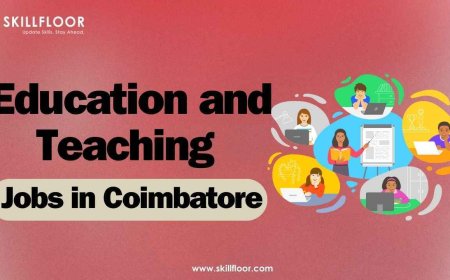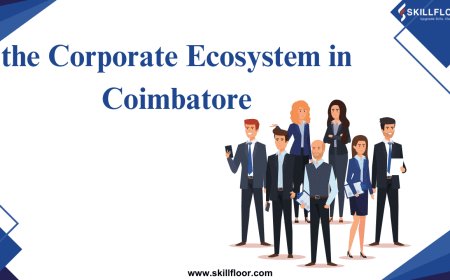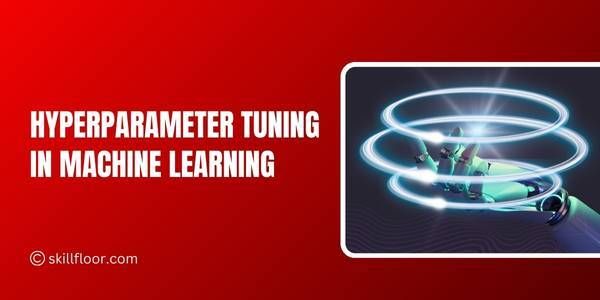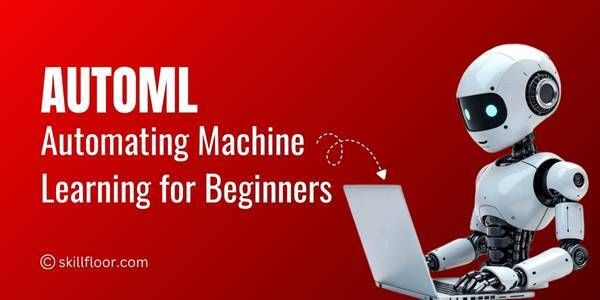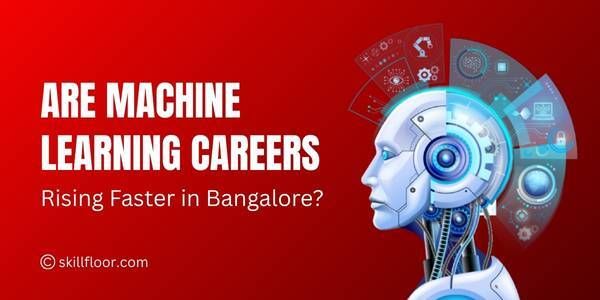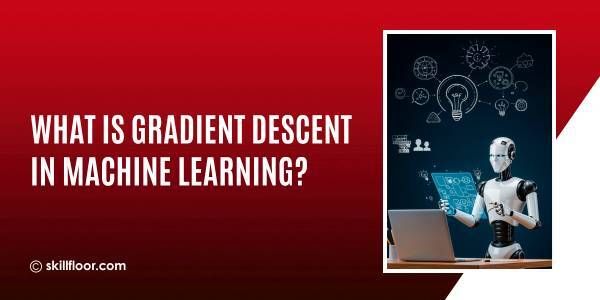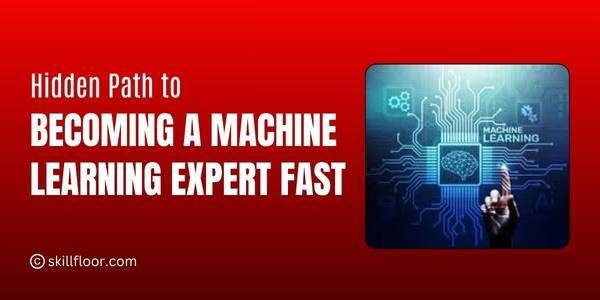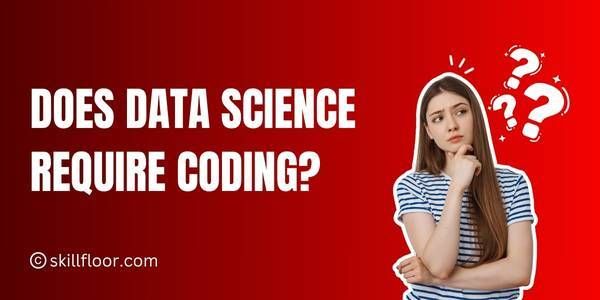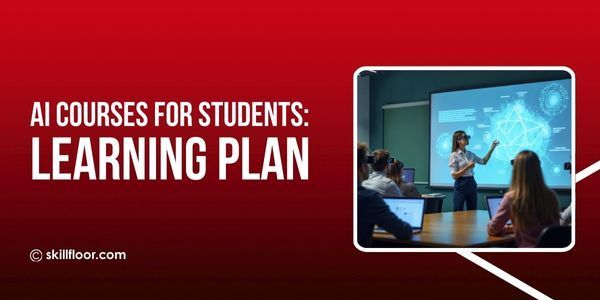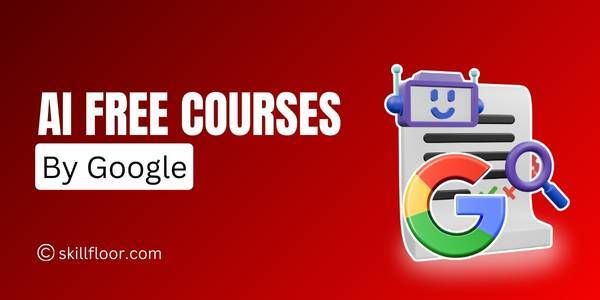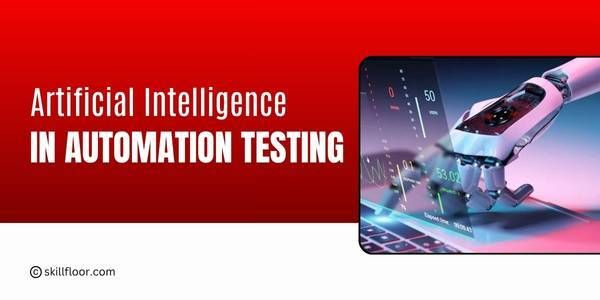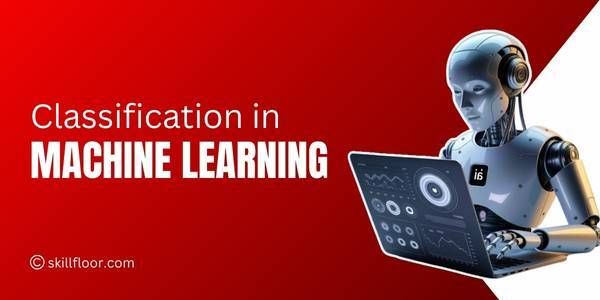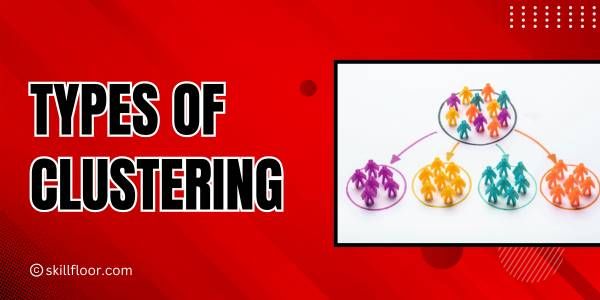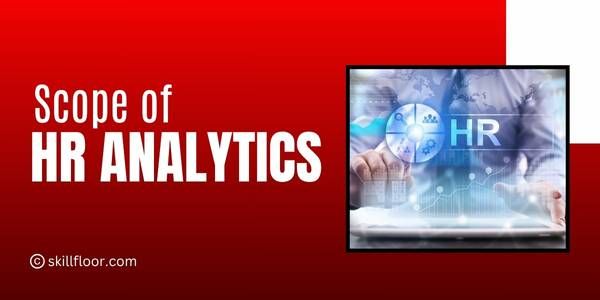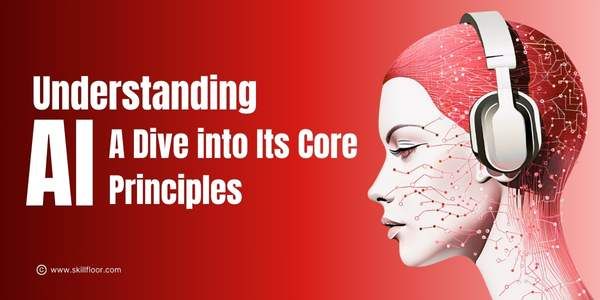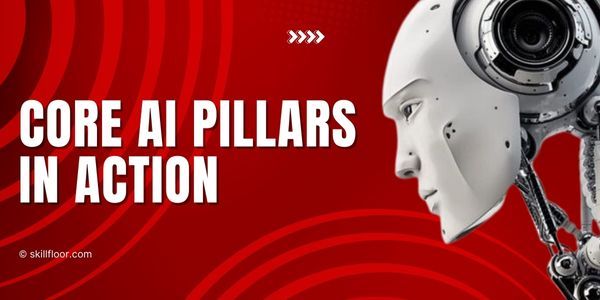Natural Language Processing Interview Questions
Prepare for your next NLP interview with this 2025 guide. Discover 40 detailed NLP interview questions and answers covering basics, transformers, and real-world use cases.
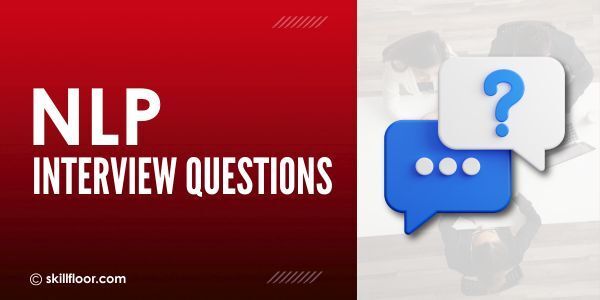
Natural Language Processing (NLP) has become one of the most exciting fields in artificial intelligence (AI) and machine learning. From powering chatbots, virtual assistants, sentiment analysis tools, and search engines to enabling machine translation, summarization, and speech recognition, NLP has become the backbone of human–computer interaction.
If you’re preparing for an NLP interview, you need to master not only the theoretical foundations but also the practical implementations of NLP concepts. Recruiters and hiring managers often test a candidate’s knowledge in areas like text preprocessing, embeddings, transformers, deep learning models, linguistic rules, and real-world applications
NLP Interview Questions And Answers
1) What is NLP, and how does it differ from general ML on tabular data?
NLP focuses on sequences of discrete tokens that carry grammar and meaning, not fixed-width numeric features. Text exhibits long-range dependencies (a word can depend on context many tokens away), ambiguity (polysemy), and open vocabularies (OOV terms). Feature engineering thus centers on tokenization and representation (BoW, TF-IDF, embeddings, contextual encoders). Models must capture order and context (RNNs, attention, transformers). Evaluation adds task-specific metrics (BLEU/ROUGE) beyond accuracy because surface form ≠ does not equate to semantic equivalence.
2) Distinguish NLP, NLU, and NLG with practical examples?
NLP is the umbrella. NLU extracts meaning/intent: e.g., slot-filling (“Book me a flight to Tokyo on Friday”). NLG generates coherent text conditioned on data or prompts: e.g., drafting a summary from meeting notes. In production, assistants combine these functions: NLU interprets the user, a planner decides on actions, and NLG produces responses. Keeping the boundary clear helps triage bugs—was the understanding wrong, or the generation style off?
3) What are core NLP tasks and why do they matter?
Common tasks include classification (sentiment/toxicity), sequence labeling (POS, NER), sequence-to-sequence (translation, summarization), retrieval (dense passage retrieval), and question answering. Each task pressures different capabilities: syntax (POS/parsing), semantics/pragmatics (QA), and world knowledge (long-context assistants). Mapping a real problem to the right task formulation (e.g., extractive vs abstractive) often determines success more than the specific model.
4) What is a language model, and why is it foundational?
A language model (LM) assigns probabilities to sequences. Autoregressive LMs (GPT-style) estimate P(wt∣w
5) What is tokenization, and how do choices affect performance?
Tokenization splits raw text into model units. Whitespace/regex tokenizers are simple but brittle. Subword methods (BPE, WordPiece, Unigram) balance vocabulary size and OOV handling by decomposing rare words into pieces (e.g., inter + ##national). Character tokenization removes OOV issues but elongates sequences. Choice impacts context length, embedding tables, latency, and robustness to typos/morphology. For multilingual or domain-shifted data, learned subword vocabularies typically win.
6) Stopwords: remove them or not?
In classic BoW/TF-IDF pipelines, removing high-frequency function words can reduce noise and dimensionality. But in transformer pipelines, stopwords often carry syntactic cues and contribute to attention patterns; removal can hurt meaning. For IR tasks, stopword removal may improve efficiency; for QA/NLI, keep them. Treat it as a hyperparameter: measure the effect on validation metrics rather than assume a universal rule.
7) Stemming vs. lemmatization—trade-offs and when to use which?
Stemming crudely chops suffixes (faster, less accurate). Lemmatization uses lexicons and POS tags to map inflected forms to dictionary lemmas (slower, more accurate). With bag-of-words models and tight latency, stemming can be fine. For information extraction, search recall, or knowledge graph linking, lemmatization preserves meaning and reduces false merges. Transformers reduce the need for either, but normalization can still help smaller classical models.
8) POS tagging and dependency parsing—why do they still matter?
Even with end-to-end transformers, explicit syntactic signals help tasks like IE, coreference, and grammar checking. POS tags highlight roles; dependency trees expose head–dependent relations (subject, object). Parsing outputs can feed rule-based constraints (e.g., extract verb–object pairs) or serve as features for interpretable systems. They also assist error analysis by locating structural failures beyond token-level mistakes.
9) Compare BoW, TF-IDF, and dense embeddings?
BoW captures term presence; TF-IDF reweights by corpus rarity—both ignore order and context but are fast and strong baselines. Dense embeddings (Word2Vec/GloVe/FastText) encode semantics in continuous space; contextual embeddings (BERT-style) adapt representations per sentence. For small datasets or strict latency, TF-IDF + linear models can outperform overfit deep nets. For semantic generalization, contextual vectors dominate.
10) Explain Word2Vec (CBOW vs. Skip-gram) and negative sampling?
CBOW predicts a target from surrounding context; Skip-gram predicts context from a target—better for rare words. Negative sampling approximates softmax by contrasting real pairs with sampled noise, making training scalable. The learned geometry reflects analogies (king − man + woman ≈ queen) due to linear regularities in co-occurrence statistics. Though superseded by transformers, Word2Vec remains useful for lightweight models and domain-specific initialization.
11) GloVe vs. FastText vs. Word2Vec—when to choose each?
GloVe factorizes global co-occurrence counts—good for capturing corpus-wide statistics. Word2Vec learns from local context windows—simple and fast. FastText uses subword n-grams, improving morphology and handling OOV forms (e.g., agglutinative languages). For rich morphology/typos, pick FastText; for clean, large corpora, GloVe/Word2Vec are fine. In practice, contextual encoders now outperform all three for most tasks.
12) What similarity metrics are used for text, and why?
Cosine similarity dominates for sentence/embedding retrieval due to length invariance. Dot product aligns with unnormalized logits when using temperature-scaled embeddings. For sparse vectors, BM25 (an IR ranking function) beats raw cosine by modeling term frequency saturation and document length. For generation evaluation, embedding-based measures (e.g., BERTScore) better capture semantic closeness than n-gram overlap alone.
13) n-gram language models—strengths, weaknesses, and smoothing?
n-grams estimate probabilities from fixed-length histories. They’re fast and interpretable but suffer from data sparsity and poor long-range modeling. Smoothing (Kneser–Ney, Good–Turing) redistributes probability mass to unseen events. Backoff and interpolation combine different n orders. Still relevant in embedded/edge settings and as baselines, but transformers have eclipsed them for quality.
14) HMMs and CRFs—where do they fit today?
HMMs model sequences with latent states and emission probabilities; CRFs directly model conditional label sequences, capturing transition dependencies without emission independence assumptions. They remain strong for structured prediction with limited data (e.g., NER in low-resource domains) and when you need transparent decoding (Viterbi) and small compute footprints. In hybrid stacks, CRFs can sit atop biLSTM or BERT features for sharper boundary control.
15) Naive Bayes for text classification—why does it sometimes beat deep nets?
With high-bias assumptions (conditional independence), Multinomial NB is simple, robust, and excels when data is tiny, features are sparse, and classes are well separated. It trains in milliseconds and offers strong, calibrated priors. It’s a superb baseline and often competitive on short texts (spam, tags), though it saturates quickly as complexity rises.
16) Topic modeling: LSA vs. LDA vs. neural variants?
LSA (SVD on TF-IDF) finds orthogonal “topics” but mixes themes and is hard to interpret. LDA treats documents as mixtures of topics with Dirichlet priors—more interpretable but sensitive to K and hyperparameters. Neural topic models and BERTopic use contextual embeddings + clustering for more coherent topics on modern corpora. Evaluate with coherence and human-in-the-loop validation.
17) RNN/LSTM/GRU—what problem did they solve, and what remains hard?
They addressed vanishing/exploding gradients with gated memory, enabling modeling of longer dependencies than vanilla RNNs. Yet they remain sequential, limiting parallelism and creating a very long context. Attention mechanisms and transformers solve the parallelization and global context problems, but LSTMs still shine in tiny data/edge scenarios with strict latency and memory constraints.
18) Attention mechanism—intuition and math sketch?
Attention computes a weighted sum of values using similarity between queries and keys: softmax(QK⊤/dk)V\text{softmax}(QK^\top / \sqrt{d_k})V. Intuitively, the model “looks up” which tokens are relevant to the current position. Multi-head attention learns diverse relations (syntax, coreference). It improves gradient flow and enables long-range reasoning. Visualizing attention maps helps debug hallucinations or missing dependencies.
19) Seq2seq and teacher forcing—what’s the trade-off?
Seq2seq encoders compress inputs; decoders generate outputs token by token. The teacher forces ground-truth tokens during training, speeding convergence but causing exposure bias (at inference, the model sees its own errors). Remedies include scheduled sampling, data noising, and minimum risk training, optimizing sequence-level metrics. Beam search with length penalties balances fluency and adequacy at decode time.
20) Beam search vs. greedy vs. sampling for generation?
Greedy picks the top token each step (fast, myopic). Beam search maintains top-k hypotheses, improving global quality for structured tasks (translation). Temperature/top-k/top-p sampling favors diversity and creativity for open-ended generation. Choice depends on task: deterministic formats (SQL/keywords) prefer greedy/beam; creative writing/dialogue prefers sampling with calibrated temperature and repetition penalties.
21) Transformer architecture—why did it win?
By replacing recurrence with self-attention, transformers achieve parallel training, better gradient paths, and explicit global context modeling. Positional encodings inject order; layer norm + residuals stabilize training. Scalability with model/data/compute follows scaling laws, enabling emergent capabilities. The architecture unifies many tasks via pretraining + adaptation, cutting task-specific engineering.
22) BERT vs. GPT—how do objectives shape behavior?
BERT (encoder, masked language modeling + next sentence) learns deep bidirectional representations—excellent for understanding tasks (classification, NER, extractive QA). GPT (decoder, next-token prediction) excels at generation and in-context learning. Hybrids (T5, UL2) explore span corruption and mixture objectives. Objective choice determines promptability, few-shot behavior, and transfer.
23) Pretraining objectives: MLM, CLM, span corruption, contrastive?
MLM masks tokens to leverage both sides of context. CLM (causal) predicts next tokens, matching generation. Span corruption (T5) masks contiguous spans, aligning with sentence-level edits. Contrastive objectives learn universal sentence embeddings (SimCSE, CLIP-style) useful for retrieval and clustering. Many production stacks combine objectives for balanced capabilities.
24) Fine-tuning vs. adapters vs. LoRA—what’s most practical?
Full fine-tuning updates all weights (best raw quality, expensive). Adapters inject small bottleneck layers; LoRA decomposes updates into low-rank matrices—both parameter-efficient and ideal for multiple tasks on one base model. For resource-constrained teams, start with LoRA/adapters, then escalate to full fine-tuning only if metrics require it. Always compare to in-context prompting baselines.
25) Prompt engineering & instruction tuning—why do they work?
Prompts shape the conditional distribution the model samples from. Good prompts specify task, format, constraints, and examples (few-shot). Instruction tuning and RLHF/RLAIF align models with human preferences, improving helpfulness and safety. In interviews, discuss ablation: show how formats, delimiters, and verifier chains reduce hallucinations and increase determinism.
26) Multilingual and cross-lingual NLP—key considerations?
Shared subword vocabularies and joint pretraining enable cross-lingual transfer. Beware negative transfer for low-resource scripts and domain drift. Evaluate per-language, not just aggregate. Techniques like translation-based data augmentation, language adapters, and script-aware tokenization improve coverage. For deployment, maintain locale-specific guardrails and Unicode-safe normalization.
27) Data quality, labeling strategy, and augmentation?
Garbage in, garbage out. Prioritize representative sampling, clear labeling guidelines, and inter-annotator agreement (κ). Use active learning to focus annotation on uncertain samples. Augment carefully: back-translation, synonym swaps, entity masking, and prompt-generated paraphrases—but monitor label shift. Keep a data card (provenance, licenses, demographics) for governance.
28) Regularization and overfitting in NLP models?
Apply dropout on attention and feed-forward layers, weight decay, and early stopping. Use mixout, stochastic depth, and label smoothing for larger models. Token-level and sequence-level augmentations (masking, span deletion) add robustness. Track train–val gaps and calibration; overfit models often produce overconfident, wrong answers.
29) Catastrophic forgetting and continual learning?
When fine-tuning on new tasks, models can forget prior knowledge. Mitigate with regularization (EWC), replay buffers, adapters per task, or LoRA banks. In production, evaluate backward transfer (old tasks) and forward transfer (new tasks). Version datasets and prompts so you can bisect regressions when behavior changes.
30) Common evaluation pitfalls to avoid?
Beware dataset leakage (near-duplicate train/test), spurious correlations (artifacts), and metric gaming (optimizing to BLEU/ROUGE without human meaning). Always complement automatic metrics with human evals (fluency, adequacy, helpfulness) and robustness checks (typos, paraphrases, adversarial prompts). Keep confidence intervals via bootstrapping.
31) Precision, recall, F1—how to choose thresholds?
Precision measures correctness when you predict positive; recall measures coverage of actual positives; F1 balances both. Use PR curves when classes are imbalanced and pick operating points that match business costs (false positives vs. false negatives). Threshold moving after calibration (Platt/Isotonic) can deliver large gains without retraining.
32) BLEU, ROUGE, METEOR, and BERTScore—when to use which?
BLEU (n-gram precision) is standard for translation; ROUGE (recall-heavy) suits summarization; METEOR accounts for stemming and synonyms; BERTScore uses contextual embeddings for semantic similarity. No single metric suffices—triangulate with human evaluation. Track length-normalized variants to avoid verbosity or truncation bias.
33) Perplexity—what does it really tell you?
Perplexity is the exponentiated average negative log-likelihood—lower is better on the model’s tokenization and domain. It correlates with next-token prediction but not always with task utility (e.g., instruction following). Use perplexity for LM training diagnostics, not as the sole KPI for user-facing quality.
34) Serving LLMs: latency, throughput, and cost levers?
Latency stems from token-by-token decoding and network hops. Improve with kv-cache, batching, speculative decoding, quantization, and smaller distilled models for simpler calls. Separate hot (low-latency) and cold (batch) paths. Log prompt+completion with privacy safeguards to analyze failure modes and drive prompt/model iteration.
35) Monitoring data drift and model degradation?
Watch input drift (vocabulary, topic, language mix), label drift, and concept drift (relationships change). Track embedding distributions, KS tests, and performance by segment (locale, device, new entities). Use canary deployments and shadow evals before full rollout. Regularly re-index retrieval corpora if using RAG.
36) Guardrails, safety filters, and red-teaming for NLP systems?
Implement content filters, prompt hardening, and tool-use constraints. Add self-critique/verifier models and structured output schemas. Run red-team tests for prompt injection, data exfiltration, jailbreaks, and harmful content. Maintain an audit trail (versions, config, evaluations) for compliance.
37) Bias and fairness in language models—detection and mitigation?
Bias can arise from imbalanced data, spurious correlations, and deployment context. Detect via group-wise metrics (TPR/FPR parity), stereotype tests, and counterfactual evaluations (swap names, genders). Mitigate using balanced sampling, counterfactual augmentation, debiasing objectives, and post-processing of outputs. Document with model cards and intended-use disclaimers.
38) Explainability: LIME/SHAP vs. attention—what’s actionable?
LIME/SHAP approximate local feature attributions for classifiers (e.g., token importance). Attention weights show focus but aren’t always causal. For generations, use saliency maps, integrated gradients, and contrast sets to surface brittle behaviors. Actionability means connecting explanations to data fixes (clean labels, add counterexamples) or prompt/policy adjustments.
39) What is Retrieval-Augmented Generation (RAG) and why is it popular?
RAG augments a generator with a retriever over an external knowledge base. It reduces hallucinations, enables freshness without full retraining, and provides traceable sources. Key design choices: index type (BM25 vs. vector), chunking, hybrid retrieval, re-ranking, and citation formatting. Evaluate with answer faithfulness and source grounding metrics, not just fluency.
40) How would you design and ship a production chatbot end-to-end?
Start with use cases & safety policy. Build data pipelines (logs → anonymization → labeling). Choose a base model and decide RAG vs. purely parametric. Implement tools (search, calculators) and orchestration (state machine/agent). Add guardrails (PII filters, jailbreak checks), monitoring (quality, safety, latency), and a feedback loop (thumbs-up/down, error tagging). Launch with A/B testing, then iterate on prompts, retrieval, and fine-tuning.
Natural Language Processing is reshaping how humans interact with machines, and its role will only grow stronger in the coming years. Mastering NLP interview questions requires not just memorizing concepts, but also developing a deep understanding of linguistic foundations, modern architectures, and real-world deployment challenges. By practicing these detailed questions, you’ll build the confidence to articulate trade-offs, explain methodologies, and showcase practical skills. Remember, interviewers value clarity, structured thinking, and applied problem-solving over rote definitions. Stay curious, experiment with projects, and keep refining your knowledge—the key to acing your next NLP interview lies in continuous learning.


















